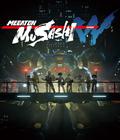It's hard to think of a female video game character more iconic than Lara Croft. Ever since her debut on the PSX, she's been the leading lady of games, even when her titles descended into mediocrity. Part Indiana Jones and part James Bond, she stood out in the crowds of space marines and anthropomorphic animals. Unfortunately, the mediocrity of her games has left Lara languishing on the sidelines. It's been a long time since there was an above-average Tomb Raider game. The new Tomb Raider is a welcome change because it's one of the best in the series' history.
In the vein of many products these days, Tomb Raider is a reboot of the franchise, so don't expect to see direct references to previous titles. The game follows Lara on her first real adventure. Already experienced and trained in "normal" archeology, Lara and a group of her friends set out to find the lost Sun Queen Himiko. A freak storm crashes their ship and leaves them stranded on an island that is the epicenter of the storms that sink any vehicle that approaches the island — including Lara's boat. As if that weren't bad enough, the island is also home to a cult, The Solarii, who worships Queen Himiko and dislikes outsiders. Lara and her friends must escape the Solarii and the mysterious island forces before they become the latest sacrifice.
Tomb Raider has a good story that suffers from a few narrative problems. The first two hours feel like they're from a completely different game. Everyone, including Lara, act like different characters with different motivations, and there are several glaring plot holes. Once you get over that, the story changes into something that's more Tomb Raider-esque. Lara undergoes an almost instant change from "inexperienced girl in an awful situation" to "well-trained badass in her first real test." The latter personality is infinitely more enjoyable, but it makes the initial two hours feel out of place. Lara's already climbed deadly mountains, and she's a master archeologist, crack shot and skilled hunter. Some ado is made about her first kill, but about an hour later, enemies are cowering in terror as she screams at them. Once you get past the first two hours, it's a fun Tomb Raider game, and Lara is a confident, strong and talented protagonist. She has brief moments of doubt, but they don't last, and she usually follows up by single-handedly wrecking an enemy stronghold. She feels like the confident Lara Croft from older games, if perhaps a bit greener and more human.
With that said, there is one aspect of the game that is quite odd: the focus on poor Lara getting the ever-loving crap kicked out of her on a regular basis. Getting beaten up is part of any good action hero's job, but Tomb Raider takes it to such excessive degrees that for a while, I began to wonder if I was secretly playing as Wolverine instead. Lara can't go five minutes without getting horribly injured or beaten up in some new way, and in the beginning of the game, she sets herself on fire and is stabbed through the side with a rusty piece of rebar. She is shot, beaten, stabbed, choked, dropped off more cliffs than one can count, and it starts to seem like a Wile E. Coyote cartoon, especially since the game is somewhat inconsistent about what does and doesn't stick.
As with any good Tomb Raider game, you spend most of your time doing various acrobatics and platforming feats, although it can occasionally feel more like Uncharted than anything else. The platforming is largely comprised of linear and semiautomated set pieces, although they're quite engrossing and exciting. Every few minutes, Lara's bad luck kicks in, and she is trapped in yet another collapsing building or crumbling cave and has to get from Point A to Point B before she dies. The platforming controls are simple and accessible. You start with jump and run and gradually unlock context-sensitive abilities that allow more freedom. Your rope arrow, for example, lets you create Batman-style rope lines at designated locations. Your climbing ax lets you ascend cliff faces. Flame arrows set barriers on fire or ignite explosive gas to create holes. Even your trusty shotgun and grenade launcher are often used to open doors.
The combat is simple but engaging third-person gameplay. You mostly fight human enemies, and though there are a few wolf attacks early on, there aren't any T-Rexes or exotic animals that were found in older Tomb Raider games. The Solarii cultists attack quickly and often, and you'll fight a few hundred before the game is over. You shoot enemies and duck behind cover while trying to score headshots, but the main focus is on countering enemies with your weapon and tactical choices. Some enemies are armored, some are melee specialists, and some fight from a distance. Individual foes are weak, but they come in big enough groups that you need to figure out how to effectively kill them. Shielded enemies require you to flank them or dodge them so you can attack while they're recovering. Ranged enemies hide behind cover, but if ropes are draped over it, you can pull it down with a rope arrow; if it's cloth, you can ignite it; if it's heavy metal, you can destroy it with a grenade launcher, and so on. Midway through the game, Lara unlocks the ability to perform melee attacks with her hand ax, so you can kill enemies without wasting ammo. This is such a basic part of combat that it's surprising it takes so long. Combat almost always feels fast and exciting.
Several combat areas offer the opportunity for stealth. As long as an enemy isn't aware that you're there, you can kill him with the bow or a silenced weapon without triggering full-on combat. The game even marks enemies who alter other enemies when killed, so you can save them for last. With clever play, you can take out every enemy in an area without engaging in combat. These stealth segments are the most enjoyable parts of the game. Taking out a building full of crazy cultists might be fun, but it's exhilarating to do it stealthily.
If there is any problem with combat in Tomb Raider, it's that it is too easy. Your tricks and tools lose their luster when you realize there's real purpose to using them. Enemies are not creative or clever enough to require you to take advantage of your various arrow types. You can spend a few minutes setting their cover on fire and systematically disabling their defenses, or you can pop them in the head with an arrow. The option to do more is nice, but the enemy difficulty is so low that you'll change tactics for the sake of variety instead of necessity. There's not much in the way of boss enemies or special foes. The game spends a large chunk of time setting up an enemy type who should be a massive threat, only to have them easily defeated. They're apparently weaker than normal foes because they rely on archaic weapons instead of machine guns.
Perhaps the biggest disappointment with Tomb Raider is that it isn't really about raiding tombs. Scattered throughout the game are optional tombs to explore, but each consists of one or two really simple puzzles that unlock a bunch of free salvage and experience points. Most involve a handful of jumps or figuring out a small gimmick, and you can finish all of the tombs in the game in about 45 minutes. The tombs are about the only puzzles in the game, aside from one or two minor ones in the main game. Since puzzles were such a big part of the previous Tomb Raider titles, it's unfortunate to see them marginalized here. On the other hand, it does benefit the narrative. Any of the side-jaunts tend to feel out of place. Lara may go from screaming for her friends to looking for gold in a tomb before going back to screaming for her friends again.
Tomb Raider has an almost excessive amount of collectibles. Every area has new goodies to find, almost all of which are pointless except for boosting your experience and loot — though these aren't particularly precious commodities. Experience, which is used for leveling up your basic abilities, flows freely and you'll max out most of your abilities without doing any side-quests. Salvage, which is used to upgrade your weapons, is a little rarer but still common enough to max out almost everything. The collectibles aren't very interesting, either, so it's not worthwhile to go out of your way to get these prizes unless you want Achievements. Compared to the Riddler Trophies in Arkham City, they feel rather half-baked, but it is quite enjoyable to return to earlier areas with upgraded gadgets in tow.
There's a vague attempt at Metroid-style exploration, but it falls flat. From any of the checkpoint "base camps," you can travel back to a previously visited one and re-explore the area to find missed collectibles. There's a handful that you can't access your first time through an area, but there isn't a real sense of freedom. The story guides you on a very linear path, and jumping back to previous areas feels weird and out of place. It doesn't make sense for Lara to do it, it doesn't make sense how she does it, and even when the plot revisits locations, it makes them feel like new areas instead of spots you couldn't access before. The main story line has a good flow, but most of the extra content feels extraneous.
Tomb Raider is a pretty lengthy game that you can finish in 10 hours, though it might take a little longer to get all of the collectibles. There isn't much replay value, but the first runthrough is worth the purchase price. There is a multiplayer mode, but it's the epitome of extraneous. It tacks the shooting mechanics on to a small selection of by-the-book multiplayer modes, and none are really worth the time. They feel like a budget version of Uncharted's far more enjoyable multiplayer, and even a few days after launch, it was tough to find a game. Don't buy Tomb Raider expecting anything but a single-player experience, and you'll be perfectly happy.
This is also a remarkably pretty game. The environments are a delight to explore, and the animations are top-notch. Several of Lara's death animations quickly cross the line from uncomfortable to downright gruesome. There is some repetition in areas, but it doesn't affect the overall experience. The voice acting is solid, although Camilla Luddington sometimes seems unsure if she should be blasé, confident or terrified. The supporting cast is quite good, although the villain is cartoonish. The soundtrack does a good job of setting the atmosphere, although it doesn't hold a candle to some of the older Tomb Raider scores.
Tomb Raider is a reboot that's mostly done right. The lack of the franchise's trademark puzzles is unfortunate, but everything else captures the feel of the original games with a more modern twist. There could be more tombs and less fighting, but none of that detracts from the well-crafted experience. There are a few areas where the game could have used some extra polish, but by and large, it's worthwhile for anyone looking for a solid adventure game. Just don't bother with the halfhearted multiplayer.
Score: 8.0/10
More articles about Tomb Raider











 Armed with only the raw instincts and physical ability to push beyond the limits of human endurance, Tomb Raider delivers an intense and gritty story into the origins of Lara Croft and her ascent from a frightened young woman to a hardened survivor.
Armed with only the raw instincts and physical ability to push beyond the limits of human endurance, Tomb Raider delivers an intense and gritty story into the origins of Lara Croft and her ascent from a frightened young woman to a hardened survivor.








































